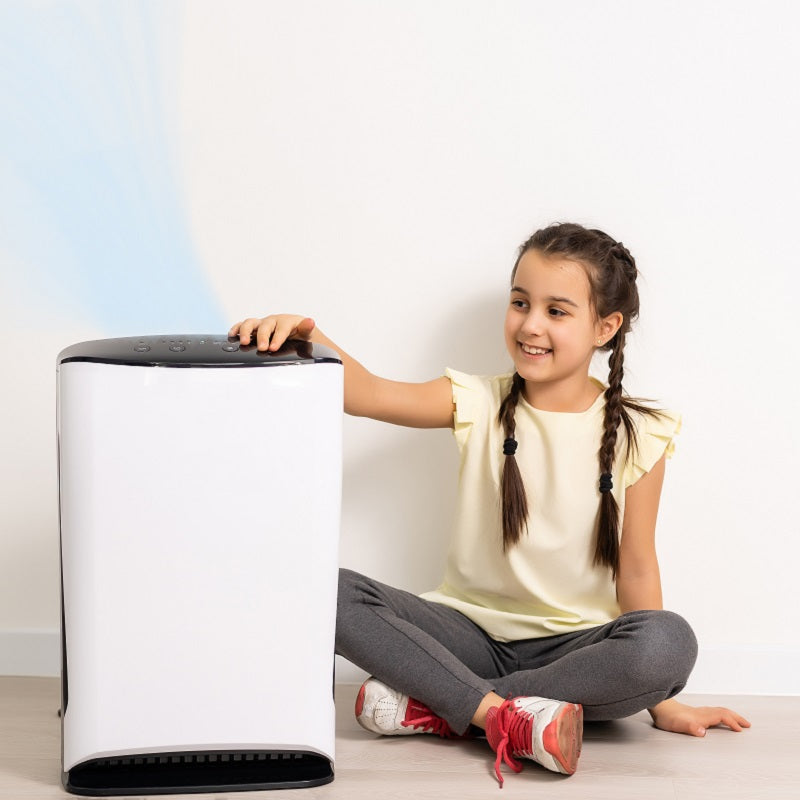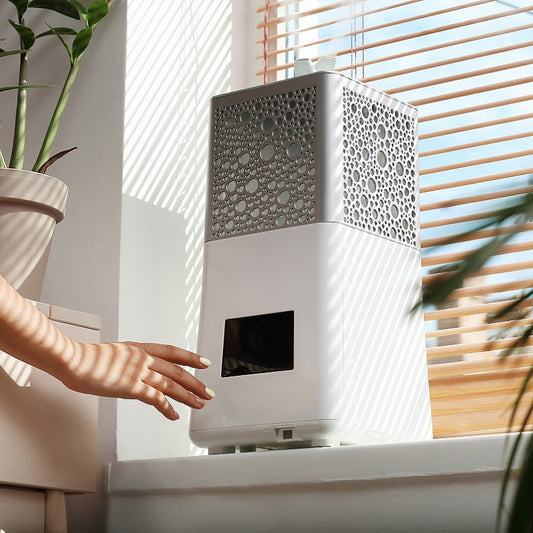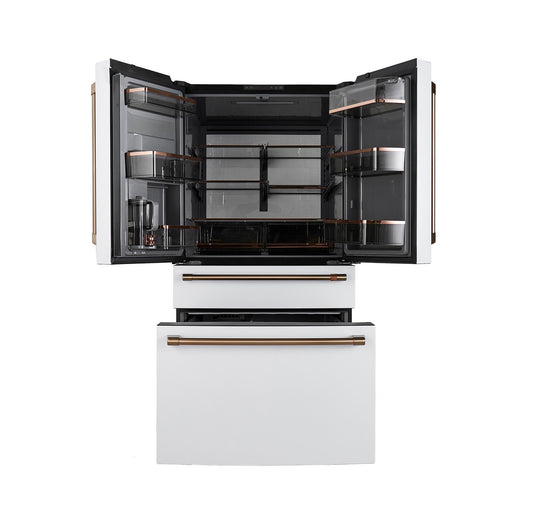So, you've got yourself an air purifier, and it's been a real champ at keeping your indoor air clean and fresh. Sometimes though, your device needs a little care to keep it performing at its best. The key? Keeping that all-important air filter in tip-top shape. After all, the filter is the main factor in how air purifiers work so effectively.
In this guide, we’ll walk you through the nitty-gritty of how to clean your air purifier filter in easy steps, ensuring your device continues to fight the good fight against dust, pollen, and all those invisible airborne foes. Let's dive in and give your air purifier the pampering it deserves!
The Importance of Clean Filters
Clean filters are the heart and soul of your air purifier's effectiveness, maybe even more so than where to place an air purifier. They trap pollutants and particles, ensuring only clean, purified air gets pumped back into your room. However, over time, these filters can get clogged with all the gunk they've heroically captured, which can hinder your purifier's performance. That's why giving them a good clean is essential to maintain your indoor air quality at its peak.
Different Types of Filters and Their Care
Air purifiers come equipped with various types of filters, each requiring a slightly different approach when it comes to cleaning:
- HEPA filters: These bad boys are fantastic at trapping fine particles but are often not washable. A gentle vacuuming will do the trick here.
- Activated carbon filters: Used to remove odors and gasses. These can't be washed but should be replaced as recommended by the manufacturer.
- Pre-filters: Often washable and reusable, these filters catch larger particles before they reach the HEPA filter.
- Washable filters: As the name suggests, these can be cleaned with water and are designed to be reused.
Knowing which type of filter your purifier uses is crucial for proper maintenance and cleaning.
Pre-Cleaning Preparations
Safety First: Unplugging and DisassemblingBefore you dive into the cleaning process, safety comes first. Ensure your air purifier is turned off and unplugged from the power source. Then, carefully disassemble the unit to access the filters, following the manufacturer's instructions to avoid any damage. If you’re still worried if air purifiers are safe, we’ve got you covered with everything you need to know.
Tools and Materials You Will NeedGather your cleaning arsenal before you start. Depending on your filter type, you'll need:
- A soft brush or vacuum with a brush attachment for dry cleaning
- Warm water and mild detergent for washable filters
- A clean, dry cloth or paper towels
- A well-ventilated area for drying washable filters
With your tools at the ready, you're all set to tackle the cleaning process head-on.

The Cleaning Process Unveiled
Cleaning your air purifier filter doesn't have to be a daunting task. Follow these steps to get your filter looking and performing like new:
Step 1: Removing the Filter
Removing the filter from your air purifier is the first step in the cleaning process. This task requires careful handling to avoid damaging the filter or the unit itself. Start by locating the filter compartment, which is typically accessible by removing the front or back panel of the air purifier. Once you've located the filter, gently slide it out of its housing, being mindful not to bend or twist it. If your air purifier has multiple filters, such as a pre-filter and a main HEPA filter, it's essential to note their order and position. This ensures easy reassembly later and maintains the correct filtration sequence for optimal air purification performance.
Step 2: Dusting Off Loose Particles
Before delving into deeper cleaning, it's crucial to remove any loose particles clinging to the filter's surface. Dust and debris can accumulate over time, reducing the filter's efficiency and obstructing airflow. Using a soft brush or the brush attachment on your vacuum cleaner, gently sweep or vacuum the filter to dislodge these particles. Take care not to apply too much pressure, as aggressive brushing or vacuuming may damage the filter material. This step is particularly beneficial for pre-filters, which often capture larger particles like pet hair and lint. By effectively clearing away surface debris, you pave the way for a more thorough cleaning process and ensure optimal filtration performance.
Step 3: Washing Washable Filters
For filters labeled as washable, cleaning them with water is a viable option to restore their effectiveness. However, it's essential to proceed with caution and follow the manufacturer's guidelines closely. Begin by rinsing the filter under warm running water, ensuring thorough coverage to remove trapped dirt and contaminants. Avoid using harsh detergents or chemicals, as these substances can degrade the filter material and compromise its filtration efficiency. Instead, opt for mild soap, which effectively cleanses the filter without causing damage. Using a soft cloth or sponge, gently scrub the filter to dislodge stubborn dirt and stains. Take care not to scrub too vigorously, as excessive force may cause tears or damage to the filter fibers. Rinse the filter thoroughly to remove any soap residue, ensuring it is clean and free from contaminants.
Important: Not all filters are washable. HEPA filters, for example, can be damaged by water. Always verify whether your filter can be washed before proceeding.
Step 4: Drying the Filter
After washing the filter, proper drying is essential to prevent mold growth and ensure the filter's longevity. Place the washed filter in a well-ventilated area and allow it to air dry completely. Avoid using heat sources such as hair dryers or direct sunlight, as excessive heat can warp or damage the filter material. Depending on the filter's thickness and moisture level, drying may take several hours or even overnight. Exercise patience during this process to ensure the filter is thoroughly dried before reinstallation. Once completely dry to the touch, the filter is ready to be reinserted into the air purifier for continued use.
Step 5: Checking for Damage
While the filter is drying, take the opportunity to inspect it for any signs of wear, tear, or damage. Small tears, holes, or frayed edges can compromise the filter's integrity and diminish its filtration efficiency. Carefully examine the entire surface of the filter, paying close attention to the seams and edges where damage is most likely to occur. If you detect any visible damage or irregularities, it's advisable to replace the filter promptly. Reusing a damaged filter can lead to subpar air purification performance and may even pose health risks by allowing contaminants to bypass filtration. By conducting regular inspections and addressing any issues promptly, you can ensure that your air purifier operates at peak efficiency and maintains optimal indoor air quality.
Post-Cleaning Care and Reassembly
Once your filter is squeaky clean, the job's not quite done. Proper drying and reassembly are just as crucial to ensure your air purifier functions at its best.
Ensuring Proper Drying
After washing, place the filter in an area with good air circulation to dry. This could mean setting it outside on a sunny day or in a well-ventilated room. It’s essential that the filter is completely dry before you put it back. Moisture in the filter can lead to mold or bacteria growth, which defeats the purpose of air purification.
Correctly Reinserting the Filter
When your filter is dry and ready to go, place it back into your air purifier, following the assembly instructions closely. If your air purifier uses multiple filters, ensure they are reinserted in the correct order. Once everything is securely in place, you can plug your air purifier back in and enjoy the benefits of cleaner, fresher air in your home.

Extending Filter Life and Performance Tips
To get the most out of your air purifier, a little ongoing maintenance can go a long way. Here are some tips to keep your air purifier running efficiently:
Regular Maintenance Schedule
Set a routine for cleaning your filters. Depending on your air purifier model and indoor air quality, this could range from every few weeks to every few months. Regular maintenance not only extends the life of your air purifier but also ensures optimal air purification performance.
When to Replace vs. Clean
Even with meticulous care, filters don't last forever. Keep an eye out for signs that your filter needs replacing, such as noticeable wear or persistent odors even after cleaning. Most manufacturers provide guidelines on how often to replace filters, but it also depends on usage and indoor air quality. Here’s where you might consider looking into filter replacement options.
Wrapping Up Your Air Purifier Filter Cleaning Routine
The significance of clean filters in maintaining indoor air quality cannot be overstated. Through regular maintenance and proper cleaning techniques, you can ensure your air purifier continues to provide the best possible protection against pollutants and allergens. Embracing these maintenance practices not only contributes to a healthier indoor environment but also maximizes the efficiency and lifespan of your air purifier. Remember, the cleaner the filter, the cleaner the air you breathe. So, take the time to care for your air purifier, and it will take care of you.







